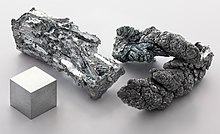Even though zinc is an essential requirement for a healthy body, excess zinc can be harmful, and cause zinc toxicity. Such toxicity levels have been seen to occur at ingestion of greater than 225Â mg of Zinc. Excessive absorption of zinc can suppress copper and iron absorption. The free zinc ion in solution is highly toxic to bacteria, plants, invertebrates, and even vertebrate fish.
Symptoms

Nausea, vomiting, pain, cramps and diarrhea.
There is also a condition called the "zinc shakes" or "zinc chills" or metal fume fever that can be induced by the inhalation of freshly formed zinc oxide formed during the welding of galvanized materials.
High levels of intake by humans

Zinc has been used therapeutically at a dose of 150Â mg/day for months and in some cases for years, and in one case at a dose of up to 2000Â mg/day zinc for months. A decrease in copper levels and hematological changes have been reported; however, those changes were completely reversed with the cessation of zinc intake.
There is no evidence that ordinary western people would benefit of increased doses of zinc. However, zinc has been used as zinc gluconate and zinc acetate lozenges for treating the common cold and therefore the safety of usage at about 100Â mg/day level is a relevant question. Thus, given that doses of over 150Â mg/day for months to years has caused no permanent harm in many cases, a one week usage of about 100Â mg/day of zinc in the form of lozenges would not be expected to cause serious or irreversible adverse health issues in most persons.
One study has shown zinc to be highly efficacious for curing warts; oral intake of zinc sulfate for two months at levels up to 600Â mg/day was found to induce complete clearance of recalcitrant warts, with a success rate of 87%.
Mechanism of toxicity
As described by the Free Ion Activity Model (FIAM), even micromolar amounts of the free zinc ion kills some organisms. The free zinc ion is also a powerful Lewis acid up to the point of being corrosive. When ingested, metallic zinc is readily dissolved by the hydrochloric acid of the stomach, and thus gives the corrosive zinc chloride. For example, swallowing a post-1982 American one cent piece (97.5% zinc) can cause damage to the stomach lining due to the high solubility of the zinc ion in the acidic stomach.
Copper. There is evidence of induced copper deficiency at low intakes of 100â€"300 mg Zn/d. The USDA RDA is 15 mg Zn/d. Even lower levels, closer to the RDA, may interfere with the utilization of copper and iron or adversely affect cholesterol.
Lipoproteins. Zinc toxicity has also been linked to alterations of blood lipoprotein levels, with increased levels of LDL and decreased levels of HDL seen.
Zinc toxicity may take months to resolve.
See also
- Zinc deficiency


0 komentar :
Posting Komentar